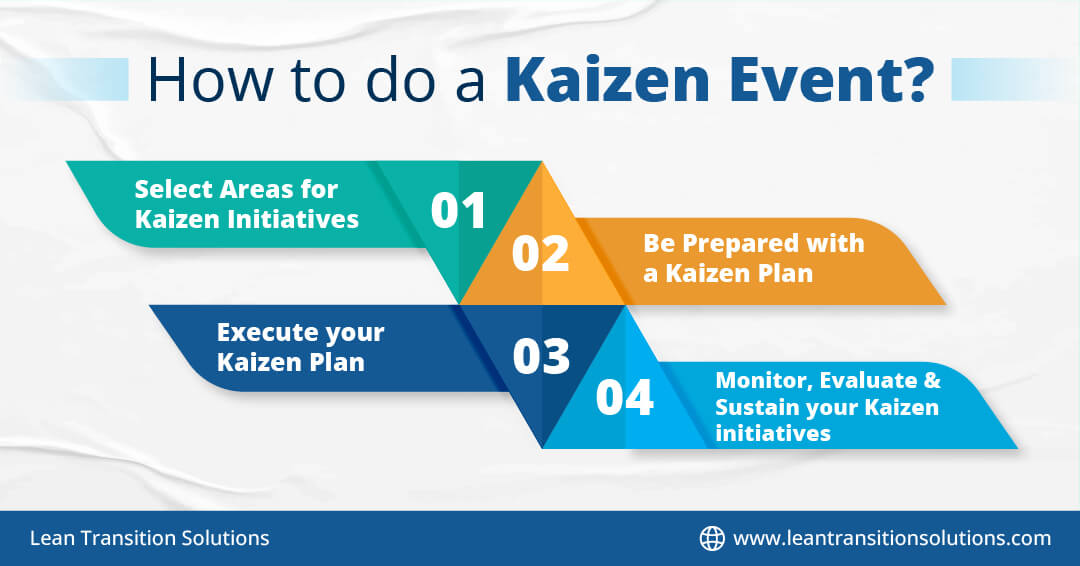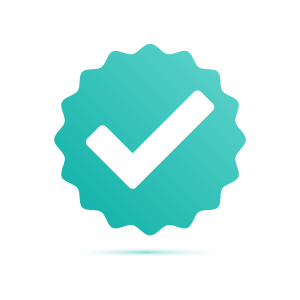How to do a Kaizen Event?
March 27, 2024
Have you ever wondered how businesses, regardless of their size or industry, manage to achieve continuous improvement? Whether small enterprises or top manufacturing businesses, organisations continuously seek new ways to enhance their operational processes.
Embracing change can be challenging at times, even though various lean tools and strategies can be employed to tackle challenges and seize opportunities whenever it's possible. As businesses progress in their continuous improvement journey, Kaizen emerges as the ideal process for this never-ending quest for perfection.
You have arrived at the right place if you need to know more about the Kaizen process improvement initiatives and how to run a Kaizen event on your shop floor! Let's explore this Lean manufacturing technique in detail.
What is a Kaizen Event?
Kaizen, meaning continuous improvement, is a powerful lean manufacturing tool rooted in Japanese philosophy. Kaizen continuous improvement is a structured approach to drive incremental enhancements in processes, systems, and workflows within an organisation. Derived from the Japanese words "kai" (change) and "zen" (for a better), Kaizen is a lean tool emphasising "change for better" and involves employees at all levels to achieve operational excellence. Masaaki Imai, the father of Continuous Improvement (CI), has pioneered and is a global leader in spreading the Kaizen philosophy.
Kaizen events are brainstorming sessions that can address specific issues, streamline workflows, and eliminate waste to achieve efficient performance, quality, and enhancement. Lean Kaizen events typically span a few days, allowing teams to concentrate on targeted improvement areas.
How to run a Kaizen Event?
Implementing Kaizen events is important for organisations to drive continuous improvement and achieve operational excellence. A clear understanding of Kaizen event steps can help you streamline processes, ensuring that teams maximise the benefits of Kaizen method. From Kaizen planning and preparation to execution and follow-up, each stage plays a key role in fostering a continuous improvement culture and achieving tangible results.
Select Areas for Kaizen Initiatives - Preparing for Kaizen Projects
A Kaizen event begins with selecting and identifying improvement opportunities. Focus on selecting areas where enhancements can yield significant benefits in terms of productivity, quality, or cost reduction.
Assemble a cross-functional team consisting of individuals from diverse departments or areas relevant to the targeted process.
A skilled Lean practitioner or facilitator is appointed to guide the cross-functional team throughout the Kaizen event. The facilitator should possess strong communication and leadership skills to facilitate collaboration and decision-making.
Be prepared with a Kaizen plan - Kaizen planning phase
Clear objectives and goals are established, outlining what specific improvements are to be achieved during the Kaizen event. Setting a Kaizen event template can do much help here.
Develop a detailed agenda and set a timeline for each day of the Kaizen event, outlining the activities and deadlines.
Allocate resources, such as time, personnel, and materials, needed for the Kaizen event's successful execution.
T cards are beneficial in planning, prioritising and scheduling events. Digital T cards can also track and schedule your resources effectively throughout the event.
Execute your Kaizen plan- Kaizen implementation phase
During the Kaizen event, team members engage in activities such as Gemba walks, process mapping, and brainstorming sessions to identify the root causes of issues and generate potential solutions.
Action plans are developed to address the identified improvement opportunities, outlining specific steps, responsibilities, and timelines for implementation.
Changes and solutions are implemented rapidly, often in real-time, to capitalise on the momentum generated during the Kaizen event.
Digital Kanban boards and 5S audit software are helpful kaizen event tools to streamline your Kaizen initiatives.
Monitor, Evaluate and Sustain your Kaizen initiatives- Kaizen Follow-Up Phase
Progress against the defined objectives and targets is monitored closely throughout the Kaizen event, with data and metrics collected to evaluate the effectiveness of the implemented changes.
Regular kaizen meetings are conducted to assess the outcomes of the event, identify any gaps or areas for further improvement, and make adjustments as necessary.
The implemented changes are sustained through ongoing monitoring, feedback mechanisms, and regular performance reviews.
Benefits of organising a Kaizen Event
Simplifying Work Processes: Kaizen lean management streamline workflows by identifying redundancies and inefficiencies, enhancing clarity, reducing errors, and accelerating task completion.
Reducing Waste: Kaizen events eliminate lean wastes such as overproduction, excess inventory, waiting time, and unnecessary motion, optimising resource utilisation and cutting costs.
Improving Safety: Kaizen events address workplace hazards and ergonomic issues, creating a secure environment, boosting morale, and preventing accidents.
Reducing Defects: Kaizen events identify root causes of defects, employing methodologies like root cause analysis and error-proofing to enhance product quality and customer satisfaction.
Increasing Productivity: Kaizen Lean manufacturing optimises production processes, boosting productivity to meet customer demands and sustain competitiveness.
Promoting Innovation: Kaizen events foster a culture of continuous improvement and innovation, encouraging the exploration of novel ideas and adaptation to market dynamics.
Encouraging Worker Accountability: Kaizen management empowers employees to drive change, fostering a sense of accountability and engagement for organisational success.
When to Use a Kaizen Event?
It is essential to know when and why you should implement Kaizen in your organisation to maximise its benefits and drive continuous improvement. Kaizen events are particularly valuable under various circumstances like:
When Operational Efficiency Needs a Boost: Kaizen events enhance operational efficiency by identifying and addressing workflow inefficiencies. Through targeted improvements, organisations streamline operations, optimise resource utilisation, and achieve significant productivity gains.
During Product or Service Launches: Implementing Kaizen events during launches refines processes efficiently, fostering a culture of continuous improvement. This ensures smooth launches, maintaining high standards of quality and customer satisfaction.
When you need to cut down costs effectively: Kaizen events play a prominent role in cost reduction by eliminating waste. Employees engaging in effective waste management practices reduce overall costs while enhancing the product or service quality.
For Employee Training and Development: Kaizen events offer valuable opportunities for training and skill development. Involving employees enhances problem-solving abilities and fosters a culture of continuous learning, aligning individual and organisational goals for long-term success.
During Cross-Functional Projects: Kaizen events facilitate collaboration among diverse departments, leveraging collective expertise to drive comprehensive and innovative solutions for complex challenges.
Best practices for Kaizen Events
Encourage Active Participation: Foster a culture of engagement by actively encouraging all team members to contribute their insights and ideas throughout the Kaizen event.
Focus on Data-Driven Decision-Making: Make decisions on accurate data and metrics to ensure that improvements are targeted and measurable, enhancing the effectiveness of the Kaizen event.
Promote Continuous Communication: Maintain open communication channels among team members and stakeholders to facilitate the sharing of progress, challenges, and insights, fostering collaboration and alignment.
Embrace Continuous Improvement: Instil a mindset of continuous improvement among team members, encouraging them to seek incremental enhancements and innovations.
Standardise Best Practices: Standardise and document successful improvements to ensure sustained benefits and facilitate knowledge transfer within the organisation.
Kaizen Event Example
Continuous improvement is essential in a dynamic manufacturing environment to optimise processes, enhance productivity, and maintain competitiveness. A 5-day Kaizen event in a manufacturing organisation focused on the opportunity for teams to collaborate, innovate, and drive meaningful improvements in the production line to achieve sustained excellence.
Day 1: Preparation and Planning
Morning (8:00 AM - 12:00 PM)
- Introduction to Kaizen principles and objectives.
- Overview of the production line and identification of improvement areas.
- Formation of cross-functional teams and assignment of roles and responsibilities.
Afternoon (1:00 PM - 5:00 PM)
- Detailed review of current production processes and workflows.
- Data collection and analysis to identify bottlenecks, waste, and opportunities for improvement.
- Initial brainstorming sessions to generate ideas for enhancement.
Day 2: Analysis and Solution Design
Morning (8:00 AM - 12:00 PM)
- Continuation of data analysis and root cause identification for identified issues.
- Collaboration on potential solutions and improvement strategies.
- Prioritisation of improvement opportunities based on impact and feasibility.
Afternoon (1:00 PM - 5:00 PM)
- Development of action plans and timelines for implementing proposed solutions.
- Refinement of ideas and consensus-building among team members.
- Preparation of materials and resources required for implementation.
Day 3: Implementation Kickoff
Morning (8:00 AM - 12:00 PM)
- Presentation of finalised action plans and timelines.
- Allocation of resources and assignment of tasks to respective teams.
- Commencement of implementation activities according to the agreed-upon schedule.
Afternoon (1:00 PM - 5:00 PM)
- Ongoing monitoring of progress and addressing any immediate challenges or obstacles.
- Regular communication and coordination among teams to ensure smooth execution.
- Documentation of changes and updates for future reference.
Day 4: Continuous Improvement and Review
Morning (8:00 AM - 12:00 PM)
- Evaluation of implemented changes and their impact on production efficiency.
- Collection of feedback from frontline workers and stakeholders.
- Identification of any further areas for refinement or optimisation.
Afternoon (1:00 PM - 5:00 PM)
- Improvement sessions to address remaining issues and fine-tune processes.
- Documentation of lessons learned and best practices for future reference.
- Preparation of final reports and presentations for sharing outcomes with stakeholders.
Day 5: Conclusion and Next Steps
Morning (8:00 AM - 12:00 PM)
- Final review of achievements and outcomes from the Kaizen event.
- Celebration of successes and recognition of team contributions.
-Planning for ongoing monitoring and follow-up to sustain improvements.
Afternoon (1:00 PM - 5:00 PM)
- Reflection on the outcomes and identification of further development areas.
- Closure of the Kaizen event with a commitment to continuous improvement.
- Transition to regular operations with a renewed focus on efficiency and excellence.
Kaizen events are versatile and can be applied to various organisational areas, including manufacturing processes, administrative workflows, customer service operations, and supply chain management. They enable organisations to unlock the necessary potential to optimise performance and adapt to evolving market demands in an increasingly competitive landscape.
A Kaizen event represents a proactive and systematic approach to organisational improvement, characterised by collaboration, innovation, and a relentless commitment to excellence. By embracing Kaizen principles, organisations can achieve sustained success and position themselves as leaders in their respective industries.
